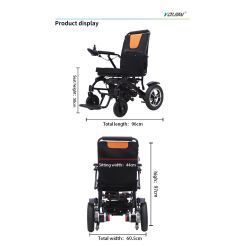Tractors-TF Series 140-200HP/Strong Engine Power
Chassis suitable for 140-200 horsepower. 16+8 shuttle shift, one lever to switch forward and backward, easy and fast operation. High-strength rear axle, thick half-tube shell. Four-wheel drive, better braking performance, more stable.
Product Description
Tractors TF Series
Technical Feature:
1. Chassis suitable for 140-200 horsepower.
2. 16+8 shuttle shift, one lever to switch forward and backward, easy and fast operation.
3. High-strength rear axle, thick half-tube shell.
4. Four-wheel drive, better braking performance, more stable.
5. Double fuel tanks, large fuel capacity, long operating time.
6. Strong engine power.
Technical Specification:
|
Model |
TF1404 |
TF1604 |
TF1804 |
TF2004 |
||
|
Horsepower (HP) |
140 |
160 |
180 |
200 |
||
|
Type |
Wheel Tractor |
|||||
|
Wheel Driver |
4WD |
|||||
|
Tyre Size (F/R) |
14.9-26/18.4-38 |
|||||
|
Engine Brand |
Weichai/Yuchai/YTO |
|||||
|
PTO Speed (r/min) |
760/850 or 540/1000 |
|||||
|
Front wheel tread (mm) |
1850、1930、1990、2060、2120 |
|||||
|
Rear wheel tread(mm) |
2200 |
1620-2020(Steplessly adjustable) |
||||
|
F/R Counterweight(kg) |
350/240 |
350/240;440/160 |
||||
|
Gear Shifts |
16F+8R |
|||||
|
Max speed (km/h) |
34.5 |
35 |
35.5 |
36 |
||
|
Mini clearance (mm) |
410 |
425 |
||||
|
Max traction(KN) |
42 |
56 |
56 |
56 |
||
|
Max lifting force(KN) |
35 |
40 |
45 |
50 |
||
|
Wheel base (mm) |
2440 |
2700 |
||||
|
Weight(kg ) |
4850 |
6320 |
6480 |
|||
|
Working dimensions (L*W*H)(mm) |
47500*2170* 3030 |
5155*2500*3150 |
||||
Influencing factors:
1. Rolling resistance. The rolling resistance of a tractor is mainly caused by the deformation of the tires and the soil. Under the weight of the tractor, the tires are flattened and the soil is compacted. During the rolling process of the wheel, the parts of the tire that are in contact with the ground in the circumferential direction are continuously flattened and deformed, and the soil in front of the wheel is pressed down to deform the soil and form wheel tracks, which generates rolling resistance that hinders the wheel from rolling forward. There are many factors that affect rolling resistance, mainly related to factors such as the size of the vertical load on the solidity and moisture of the ground. For the same tractor, if the ground conditions are different, its rolling resistance is also different. For example, if the rolling resistance is small when driving on asphalt and cement or dry and hard ground, the tractor has greater traction. Under the same use conditions, if the weight added to the tire is greater, the soil deformation in the vertical direction is greater, and the rolling resistance is also greater. Generally speaking, reducing the deformation of the tire itself and the vertical deformation of the soil is conducive to reducing rolling resistance. If the tractor is driving on soft ground, using low-pressure tires and increasing the tire support area can reduce the deformation of the soil in the vertical direction, reduce rolling resistance, and thus improve traction. Since tractors are mainly used for field operations and mostly travel on soft ground, in order to reduce the deformation of the soil in the vertical direction, tractors generally use the lowest pressure tires, and the same is true for widened tires. In our operations, we should pay attention to the differences in the use of low-pressure tires, widened tires and high-pressure tires.
2. Traction resistance. Traction resistance is the resistance that the tractor must overcome when driving agricultural machinery to operate. It is equal to the traction force transmitted to the agricultural machinery by the tractor through the connecting device. Since traction is equal to drive minus rolling resistance, increasing driving force and reducing rolling resistance are effective measures to increase traction.
3. Driving force. It is the horizontal reaction force of the road surface on the driving wheel. Therefore, the size of the driving torque Mk transmitted to the driving wheel by the internal combustion engine through the transmission system indicates that the driving force Pk of the tractor is also greater. However, since Mk is determined by the power of the internal combustion engine, Pk is also limited by the power of the internal combustion engine. At the same time, Pk is limited by soil conditions and cannot be increased infinitely, because when the reaction force of the soil, that is, the driving force Pk, increases to a certain extent, the soil is destroyed, the driving wheel slips seriously, and the driving force Pk cannot be increased any more. We call the maximum reaction force that the soil can produce on the driving wheel "adhesion". It can be seen that the maximum value of the driving force Pk is not only limited by the internal combustion engine, but also by the soil adhesion, and cannot be increased infinitely. Adhesion reflects the ability to generate the maximum driving force between the drive and the soil. There are many factors that affect adhesion, mainly related to ground conditions, tire pressure, size, pattern, and the size of the vertical load acting on the tire. For tractors, under certain soil conditions, reducing tire pressure within a certain range, increasing tire support area, improving the wheel's grip on the soil, and increasing the wheel's adhesion weight are all conducive to improving the tractor's adhesion. Low-pressure tires are generally used on tractors. Some tractors use widened tires and high-pattern tires, and add counterweights to the tractor's drive wheels. These are all measures taken to increase the tractor's adhesion and improve the tractor's traction capacity. However, it should be pointed out that although adding counterweights to the driving wheels can increase adhesion, it also increases the deformation of the soil in the vertical direction and increases rolling resistance. Therefore, whether to add counterweights depends on the specific conditions of use and weighs the overall effect. The maximum adhesion and ability to resist slipping between the tractor's driving wheels and the ground are called the tractor's adhesion performance. If the adhesion performance is good and the slippage is light, the driving torque can be fully utilized, the capacity of the internal combustion engine can be fully utilized, and the tractor will appear to be powerful when working. If the adhesion performance is poor and the slippage is severe, the driving torque cannot be fully utilized, the capacity of the internal combustion engine cannot be fully utilized, and the tractor will appear to be powerful when working, or the tractor will not be very powerful. Severe slippage of the driving wheel will reduce the tractor's driving speed, reduce production and economy, and accelerate the wear of the driving wheel tires. In addition, the structure of the soil will be destroyed.









